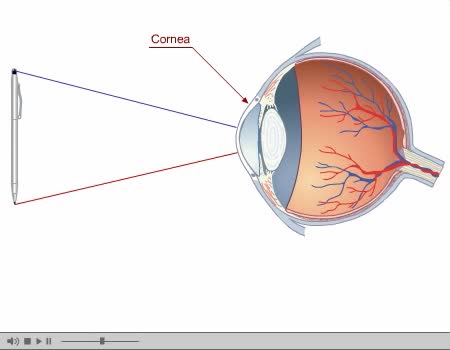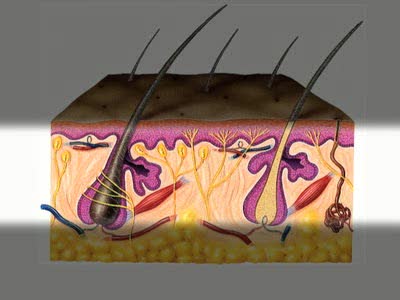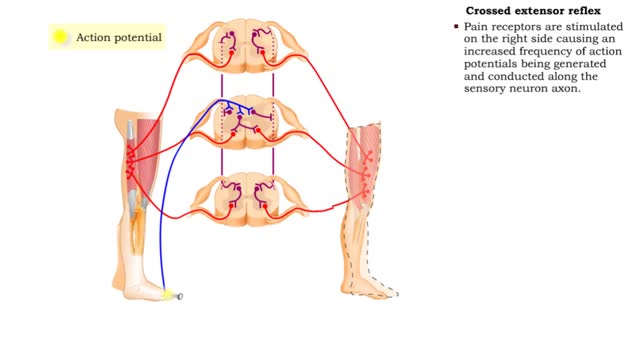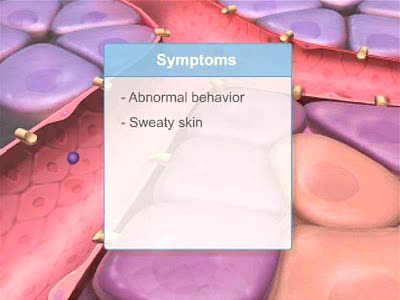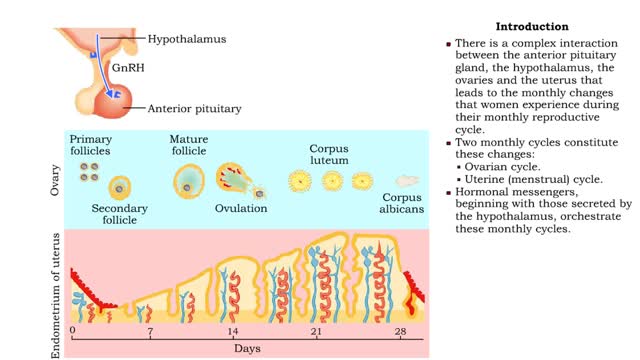Search Results
Results for: 'What are Taste Receptors?'
By: HWC, Views: 8513
What Are Antibodies? Antibodies, also known as immunoglobulins, are Y-shaped proteins that are produced by the immune system to help stop intruders from harming the body. When an intruder enters the body, the immune system springs into action. These invaders, which are called antigens, can be vi...
Virtual Tour of the Eye Animation
By: Administrator, Views: 10335
Eye Composed of special anatomical structures that work together to facilitate sight: Cornea Pupil Lens Vitreous body Light stimulates sensory receptors (rods and cones) in the retina or innermost layer of the eye. Vision is made possible through the coordinated actions of nerves that co...
Component of feedback systems & Communication and regulation of body systems
By: HWC, Views: 7844
• Primary responsibility for communication and regulation in the body is shared by the nervous and endocrine systems. • The two systems work alone or together in specialized physiological processes called feedback systems to maintain homeostasis. • Feedback systems - or loops - are ...
By: Administrator, Views: 10985
The integumentary system comprises the skin and its appendages acting to protect the body from various kinds of damage, such as loss of water or damages from outside. The integumentary system includes hair, scales, feathers, hooves, and nails. It has a variety of additional functions; it may serv...
Flexor reflex & Crossed extensor reflex
By: HWC, Views: 7626
• The flexor reflex is a response to pain. This reflex is polysynaptic, ipsilateral, and intersegmental. • Pain receptors are stimulated causing increased frequency of action potentials to be generated and conducted along the sensory neuron axon. • The sensory impulses excite several ass...
By: Administrator, Views: 11822
The islets of Langerhans are composed of three major types of cells: Alpha cells secrete glucagon, elevating blood sugar. Beta cells secrete insulin, maintaining normal blood sugar. Delta cells secrete somatostatin, which suppresses release of glucagon and insulin. Hyposecretion or inadequa...
Nervous pathway to the Neuromuscular (NMJ)
By: HWC, Views: 8258
• A nervous impulse, also called an action potential, starts from the brain or spinal cord to signal skeletal muscle cell contraction. Action potentials continue along a motor neuron to the muscle cell. • The signal to contract must cross a synapse - the neuromuscular junction (NMJ) - betwe...
Neural regulation of blood pressure - baroreceptor and chemoreceptor reflexes
By: HWC, Views: 7988
• The nervous system regulates blood pressure with two reflex arcs: baroreceptor and chemoreceptor. ■ Baroreceptors (pressure) and chemoreceptors (chemical) are located in the carotid sinus and aortic arch. • Carotid sinus reflex helps maintain normal blood pressure in brain. • Ba...
Female Reproductive System - Hormonal regulation (GnRH) الجهاز التناسلي للأنثى - التنظيم الهرموني
By: HWC, Views: 8146
• There is a complex interaction between the anterior pituitary gland, the hypothalamus, the ovaries and the uterus that leads to the monthly changes that women experience during their monthly reproductive cycle. • Two monthly cycles constitute these changes: • Ovarian cycle. • Uter...
Advertisement




